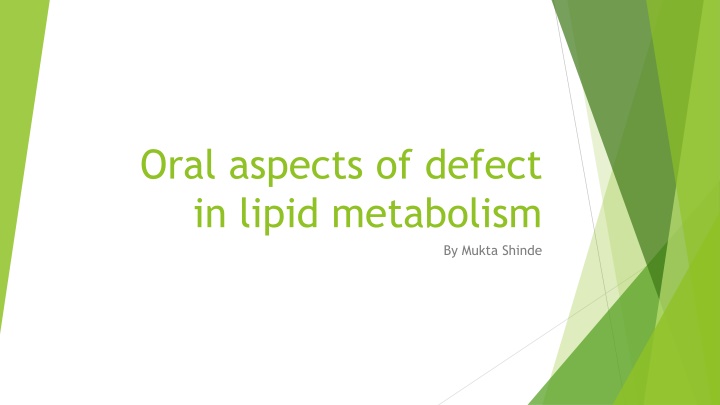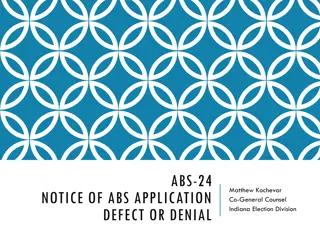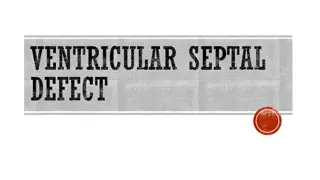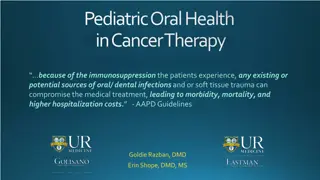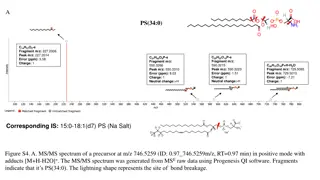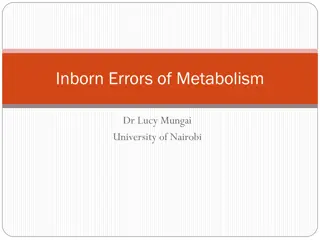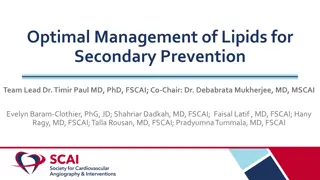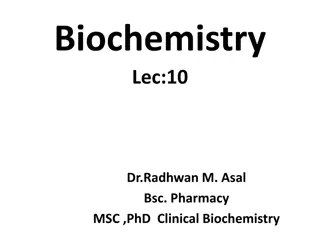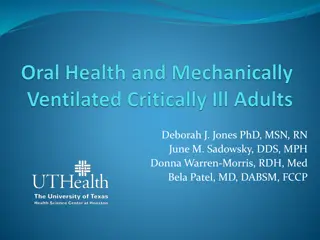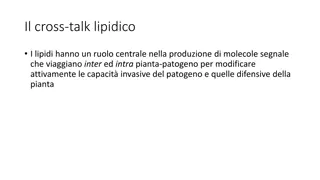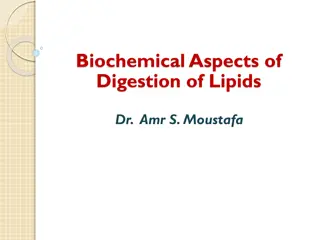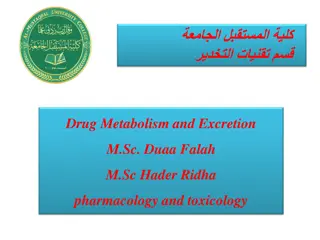Oral aspects of defect in lipid metabolism
Lipids, insoluble in water but soluble in organic solvents, play a vital role in metabolism. Disturbances in lipid metabolism can lead to rare conditions like Gaucher Disease, characterized by lysosomal storage issues. This disease has various types affecting different age groups, each with distinct symptoms. Common features of Gaucher Disease include bone abnormalities and Gaucher cell infiltration. Biopsies can reveal specific histological features. Understanding these oral aspects is crucial for diagnosis and treatment.
Download Presentation

Please find below an Image/Link to download the presentation.
The content on the website is provided AS IS for your information and personal use only. It may not be sold, licensed, or shared on other websites without obtaining consent from the author.If you encounter any issues during the download, it is possible that the publisher has removed the file from their server.
You are allowed to download the files provided on this website for personal or commercial use, subject to the condition that they are used lawfully. All files are the property of their respective owners.
The content on the website is provided AS IS for your information and personal use only. It may not be sold, licensed, or shared on other websites without obtaining consent from the author.
E N D
Presentation Transcript
Oral aspects of defect in lipid metabolism By Mukta Shinde
Introduction Lipids are heterogenous group of organic compds, insolube in water but soluble in organic solvents like alcohol, choloroform etc. Lipid metabolism is concerned with assimilation, utilisation, replacement and synthesis of fatty acids.
Disturbances Disturbances in lipid metabolism are rare, but they do occur Classified as lipoid storage diseases Xanthomatoses 1. Lipid granulomas 2.
GAUCHER DISEASE Common lysosomal storage disease Characterised by deposition of gluco-cerebroside in cells of monocyte- macrophage system Caused dues to Deficiency of lysosomal hydrolase, glucocerebrosidase Types: Type1 chronic non-neuropathic form 1. Type 2 infantile or Acute neuropathic form 2. Type 3 juvenile or Norrbottnian form 3.
Type 1 : Chronic non-neuropathic form Often presence in childhood Hepatosplenomegaly, pancytopenia and skeletal diseases Common occurrence in Ashkenazi Jewish descents Radiographic evidence- Erlenmeyer Flask Deformity of distal femur
Type 2 : infantile or acute neuropathic form Causes rapidly progressive neurovisceral involvements Death of the infant
Type 3: juvenile or Norrbottnian form Juveniles with systemic involvments CNS involvments begins in teens or twenties
Histology Biopsy of spleen or liver Gauchers cell- Round pale cell, 20-80 Microns in diameter , small eccentric nucleus, Wrinkled or crumpled silk cytoplasm.
Common features GAUCHER cell infiltration is common in long bones. Mandible is a long bone hence becomes a target Pseudocystic or honeycomb radiolucent lesions in molar and premolar region due to accumulation of GAUCHER cell 1. Osteopenia and osteoporosis 2. Enlargement of bone marrow spaces 3. Displacement of mandibular canal 4. Apical root resorption 5.
Oral findings Yellow pigmentation and petechiae Delayed eruption of permanent teeth
Prognosis and treatment Prognosis is very poor Leads to death in 1 yr Less virulent forms may persist until sixth decade , patients usually die of intercurrent infection Enzyme replacement therapy is available but expensive.
Niemann-Pick Disease Least common of genetic disturbances of lipid metabolism. Inherited as autosomal recessive trait. Results from lysosomal accumulation of sphingomyelin due to Deficiency of Sphingomyelinase.
Classification Type A infantile or acute neuropathic Type B chronic non neuropthic(less common) Type C biochemical and genetically distant form. The mutant gene is 18q11-12
Type A Severe infantile form with extensive neurological involvement, viseral accumulation of sphingomyelin Hepatosplenomegaly, minor dysmorphy, brownish pigmentation is skin Retinal examination shows macular cherry red spots. Child may die around 1.5 to 3yrs due to cachexia
Type B Organomegaly is common (hepatosplenomegaly) No nervous involvements Bruising Epistaxis Retarded body growth Delayed puberty Joint pain, abdominal pain diarrhea Macular halo and cherry red spots
Type c Autosomal recessive disorder Due to mutation of NPC1 and NPC2 genes Affects anyone from perinatal to adult age Spleen and lungs are commonly involved Neurological manifestation. Cerebellar ataxia 1. Dysarthria 2. Dysphagia 3. Dementia 4.
Histology Affected cells become enlarged(Niemann Pick cells) Due to accumulation of sphingomyelin and cholestrol in the lysosomes of cells Foamy cytoplasm- numerous vacuoles
Treatment Antibiotic therapy Organ transplant Enzyme replacement therapy
Letterer Siwe Disease Acute, histiocytic disorder Belongs to langerhan cells disorder Spectrum Occurs in infants, usually below 3 yrs of age
Clinical features Skin rash(trunk scalp and extremities) Erythematous purpuric ulceration Low grade spiking fever with malaise and irritability Splenomegaly, hepatomegaly, lymphadenopathy Nodular or diffused involvement of visceral organs like lungs And GIT Progressive anemia as well as leukopenia
Oral manifestation Ulcerative lesions Gingival hyperplasia Destruction of bone of mandible and maxilla may occur Loosening and premature loss of teeth
Histology Histiocytic proliferation with or without eosinophils Cytologically altered histiocytes resemble histiocytic lymphoma
Treatment Chemotherapy in combination with vincristine and prednisolone has been tried in chronic form of LCD with success but in Letterer Siwe Disease it is uncertain Prognosis is poor Course of disease is rapid and terminates fatally in short time
THANK YOU THANK YOU
